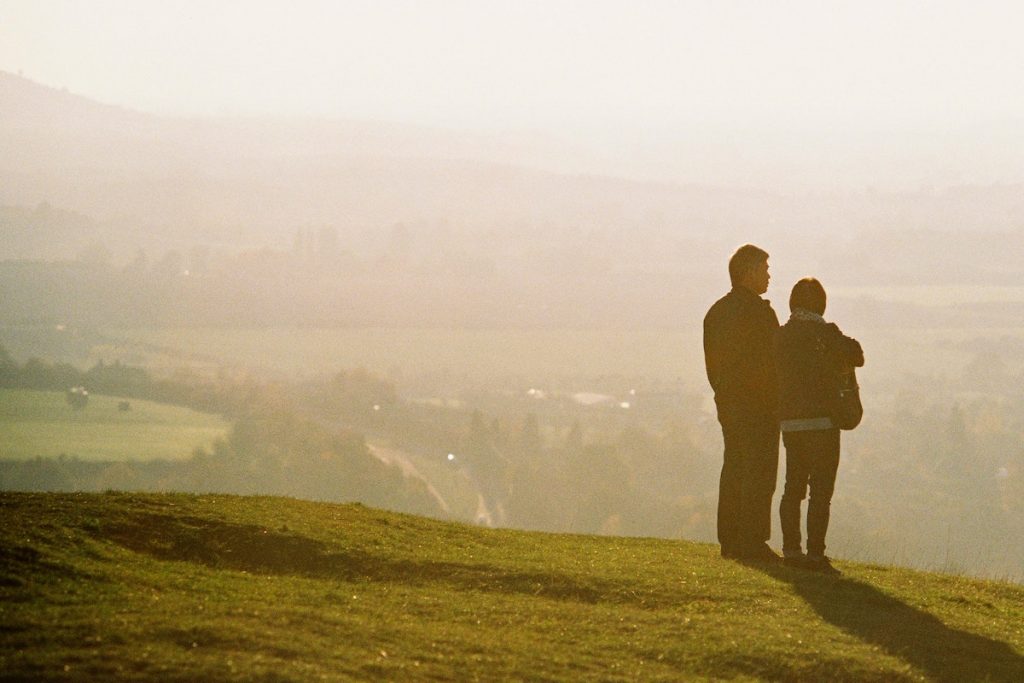For a year, I took upon myself an intention to stop hurrying. This didn’t mean that I couldn’t move quickly, but I discovered how much hurrying is a state of mind.
Do we find ourselves in that state of mind where we’re leaning forward into the next moment, into the next thing we need to do? Can we, instead, move as needed, slowly or quickly, without being hostage to that state of mind? Can we begin to notice the beginnings and endings in our day, rather than accumulating too much unfinished business?
Things do have endings, but it doesn’t mean that they’re completed or finished. When we end a telephone call, an activity, a conversation, or something that we’re doing, we tend to then turn our attention towards something else. Can we pause in those moments to know those endings, rather than carrying one activity into the next moment where it is not needed?
Whatever we practice, we get better at, whether it’s the skillful or the unskillful.
Try to give yourself moments in the day to connect with spaciousness. To step outside, to see the space around the trees, to look at the sky at night, to calm the body, to feel your feet touch the ground. Can you attend wholeheartedly to the meal that needs to be cooked? To the activity of walking?
We are always practicing something in our lives. If we’re not practicing calm abiding, it is highly possible that we are practicing agitation, restlessness, craving, or ill will. It is clear in the development of this path that we need to be aware of what we are practicing in any moment. Because whatever we practice, we get better at, whether it’s the skillful or the unskillful.
Can we be comfortable with non-doing?
We can, at times, find refuge or a sense of meaning, identity, and purpose in always being engaged in doing. But there may be moments in our day when we simply are resting in non-doing and connected to the mind body of this moment, still and present without any agenda or any plan.
Can we appreciate the taste of collectedness, of samadhi, in our bodies and minds? The taste of calmness and stillness? Can we make peace with the unarguables: that change is part of all of our lives? It’s not emotionally neutral. At times we welcome it and at times we fear it.
Can we make peace with the reality that we will never arrange the conditions of our lives where there is none of the difficult or unpleasant? This is woven into our being as a human: We will have losses and gains, we will age, we will sicken and we will die, and we will lose things. Can we make peace with this? Can we make peace with stepping out of the agenda of becoming a perfect self? When we can make peace with the unarguables, much as the agitation of our lives begins to calm.
Samadhi may be a choice. Viktor Frankl, a Holocaust survivor, said, “Between stimulus and response, there is a space. And in that space lies our power to choose our response. In our power to choose, lies our growth and our freedom.”
The well-collected heart knows how to make that space and knows how to make wise choices about what we practice and what we cultivate in any moment.
It’s also about what we don’t practice and what we don’t cultivate. This is a journey, as the Buddha described it, of swimming against the tide—swimming against the tide of the norms in our culture that lead to unskillfulness, over-busyness, or delusion. It is very often swimming against the tide of many of our own habit patterns of agitation. Then we find the coolness and the stillness of the waters. We discover a mind and heart that delights in calm abiding, stillness, and collectedness. We meet and develop a mind that is a friend.
⧫
Excerpted from Christina Feldman’s Tricycle Meditation Month Video “Samadhi as a Life Practice”. Watch the full video here and learn more about Meditation Month here.
Thank you for subscribing to Tricycle! As a nonprofit, we depend on readers like you to keep Buddhist teachings and practices widely available.
